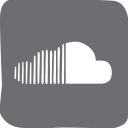Psycholinguistic and Corpus Approaches to Code-Switching
The primary goal of this course is to introduce students to the emerging psycholinguistic literature on bilingual codeswitching. While codeswitching has long been a topic of study in sociolinguistics and corpus linguistics, it is only recently that psycholinguists have begun to turn their attention to codeswitching phenomena as a tool for better understanding the mechanisms that support (bilingual) language processing. The study of codeswitching is thus unique in that it has historically been approached from many different perspectives – such that students coming from many different backgrounds will find some familiar territory – but the attempt to bring codeswitching studies “into the laboratory” is very much a current issue in psycholinguistics.
The readings for the first week will introduce the basic psycholinguistic background that will allow students to situate codeswitching within its larger psycholinguistic context. We will then consider some of the many non-psycholinguistically oriented, quantitative corpus studies that have examined the linguistic patterns attested in spontaneous codeswitching data from various bilingual communities. In this section of the course, students will be encouraged to interpret the linguistic data through the lens of the psycholinguistic theories discussed during the first week. The final unit of the course will introduce a selection of recent studies attempting to integrate the study of codeswitching into traditional psycholinguistic models of bilingual language processing. In discussing these studies, we will focus on the ways in which they have succeeded and/or come up short, in light of the fact that codeswitching is a complex phenomenon that is difficult to study in a controlled laboratory setting.





